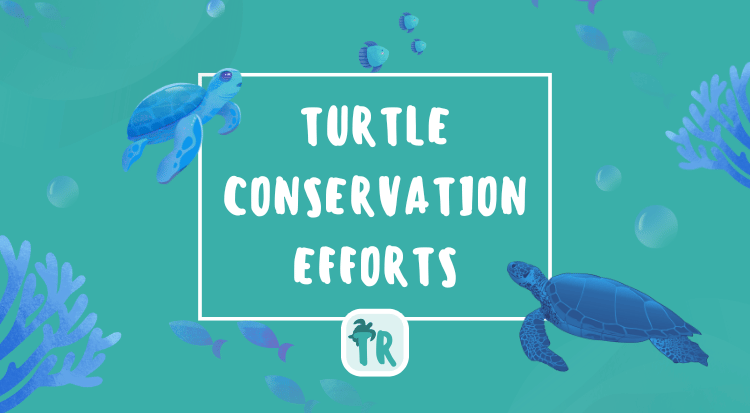Turtle Conservation Efforts - What You Need to Know

Turtles have existed for millions of years, but today, they face many threats that put their survival at risk. Turtle conservation efforts aim to protect these amazing creatures and their habitats.
This guide will explore the challenges turtles face, the organizations working to save them, and how you can help. By understanding and supporting turtle conservation, we can ensure that turtles continue to thrive for future generations.
Threats to Turtle Populations
Turtles around the world are facing serious and urgent challenges that endanger their survival. It's crucial that we act now to protect these magnificent creatures.
Habitat Loss
- Urban Development: Building cities and roads destroys turtle habitats.
- Deforestation: Cutting down forests removes homes for land turtles.
- Wetland Drainage: Draining wetlands eliminates vital habitats for aquatic turtles.
Pollution
- Plastic Waste: Turtles can ingest or become entangled in plastic debris.
- Chemical Pollution: Pesticides and chemicals can poison turtles and their food sources.
- Oil Spills: Contaminate water and harm turtles' health.
Climate Change
- Rising Temperatures: Affect nesting sites and can skew the sex ratios of hatchlings.
- Sea Level Rise: Floods nesting beaches and habitats.
- Extreme Weather: Storms can destroy nests and habitats.
Illegal Wildlife Trade
- Poaching: Turtles are hunted for their shells and meat and as pets.
- Black Market: Illegal trade reduces wild populations.
Bycatch
- Fishing Nets: Turtles can accidentally get caught and drown in fishing gear.
- Longline Fishing: Hooks can injure or kill turtles.
Conservation Organizations
Many groups are working hard to protect turtles.
World Wildlife Fund (WWF)
- Global Efforts: Works worldwide to protect turtle species and their habitats.
- Programs: Supports anti-poaching efforts and promotes sustainable fishing.
Sea Turtle Conservancy
- Focus on Sea Turtles: Dedicated to the conservation of sea turtles.
- Research and Education: Conducts studies and educates the public.
Turtle Survival Alliance
- Saving Turtles: Focuses on preventing turtle extinctions.
- Captive Breeding: Breeds endangered turtles to boost populations.
Local Organizations
- Community Action: Local groups protect turtles in specific regions.
- Volunteer Opportunities: Often offer ways for people to get involved.
How to Help Turtles
Your actions can make a significant difference in turtle conservation. Every step you take, no matter how small, contributes to the larger cause.
Reduce Plastic Use
- Use Reusable Bags: Avoid plastic bags that can end up in oceans.
- Say No to Straws: Reduce single-use plastics.
Support Conservation Groups
- Donate: Financial contributions help fund conservation projects.
- Volunteer: Give your time to local conservation efforts.
Be a Responsible Pet Owner
- Adopt, Don't Shop: Avoid buying wild-caught turtles.
- Proper Care: Provide a good home if you own a pet turtle.
Spread Awareness
- Educate Others: Share information about turtle conservation.
- Social Media: Use platforms to raise awareness.
Participate in Beach Cleanups
- Remove Trash: Help keep turtle habitats clean.
- Protect Nests: Assist in monitoring and protecting nesting sites.
Laws and Regulations
Laws help protect turtles from harm.
Endangered Species Act (ESA)
- Protection: Lists species that are endangered or threatened.
- Illegal Activities: Prohibits harming or trading listed species.
Convention on International Trade in Endangered Species (CITES)
- Global Agreement: Controls international trade of endangered species.
- Permits Required: Trade of listed species requires special permits.
Local Regulations
- Fishing Laws: Rules to prevent bycatch, like using turtle excluder devices.
- Habitat Protection: Laws to preserve wetlands and nesting beaches.
Turtle Rescue Stories
Success stories inspire hope for turtle conservation.
The Kemp's Ridley Sea Turtle
- Near Extinction: Numbers dropped dramatically in the 20th century.
- Conservation Success: Efforts have helped populations recover.
Saving the Galápagos Tortoise
- Endangered Species: Threatened by invasive species and habitat loss.
- Breeding Programs: Captive breeding has increased their numbers.
Habitat Preservation
Protecting habitats is key to turtle survival.
Protecting Nesting Beaches
- Restrict Development: Limit building on important nesting sites.
- Beach Lighting: Reduce artificial lights that disorient hatchlings.
Conserving Wetlands
- Water Quality: Keep wetlands clean from pollution.
- Land Management: Prevent drainage and conversion of wetlands.
Marine Protected Areas
- Safe Zones: Areas where fishing and other harmful activities are limited.
- Biodiversity: Protects not just turtles but entire ecosystems.
Conclusion
Turtles face many challenges, but we can help protect them with collective effort. By learning about the threats they face and supporting conservation efforts, everyone can contribute to the survival of these incredible creatures.
Whether through simple daily actions or participation in conservation programs, your efforts make a difference. Together, we can ensure that turtles continue to thrive in our world's oceans and lands.